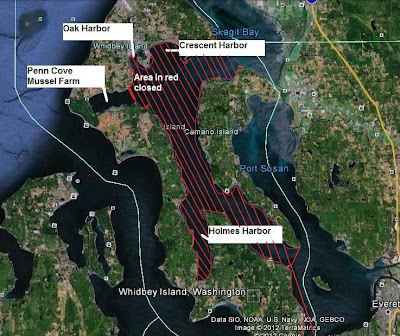In callous disregard to years of work spent updating Jefferson County's Shoreline Master Program, the Department of Ecology (DOE) has told Jefferson County they will not accept the plan if salmon farms ("net pens") are not allowed. Jefferson County's position is salmon farms are not "dependent" on being sited in open waters, clearly supported by numerous upland operations throughout the world. Of course it costs more, but what is the cost of losing Puget Sound's wild stock of salmon?
Upland fish farm
Despite clear scientific evidence of open-water operations spreading sea lice to surrounding waters; infections creating the need for antibiotics which spread in the waters of Puget Sound and virus spreading to wild salmon; the need for large amounts of forage fish to be harvested in order to feed the penned salmon; and, an inability to guarantee these "couch potato salmon" will not escape and genetically degrade the wild stock or habitat supporting that wild stock, DOE has told Jefferson County to create a path for permitting. [click here for a presentation by Dr. Lawrence Dill on salmon farming, courtesy of Olympic Peninsula Environmental News]
Sea lice
Once that path is in place, economic forces will drive the car down that road, no matter how bumpy, to overcome whatever objections there may be. As seen in too many cases, hiring attorneys and scientists to support a position is too easy for large corporations to do and difficult for counties and citizens to match.
The time to prevent this proven risk to Puget Sound is now, by telling DOE "No. We will not allow a path for permitting net pens in our SMP."
DOE: "Trust us. This is good for Jefferson County."
Puget Sound has economic value far greater than its ability to farm sea food. Its ability to support native wild stock of salmon and native shellfish should not be threatened by the economics of aquaculture. Jefferson County should be applauded for wanting to protect Puget Sound by telling DOE: "Our decisions will not be driven by the economics of aquaculture."
Get involved, industry is. Call Representative Tharinger: (360) 786-7904 or Representative Van De Wege (360) 786-7916 and tell them you support Jefferson County.



















